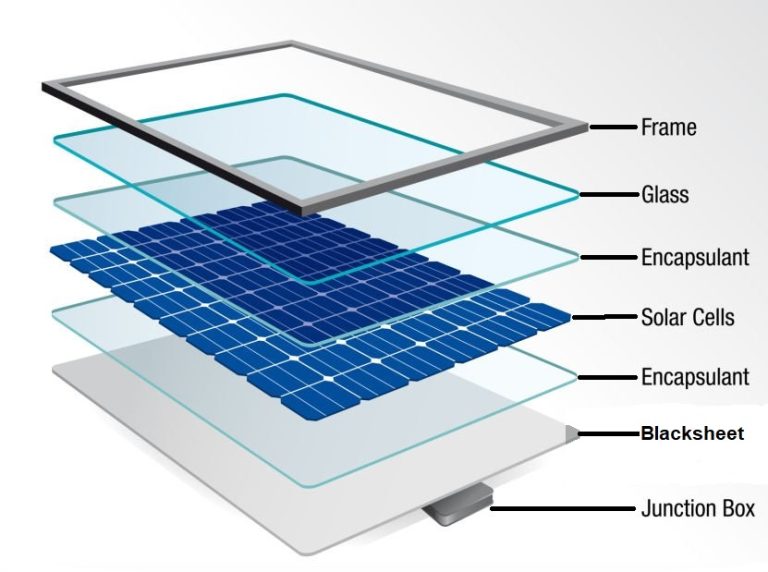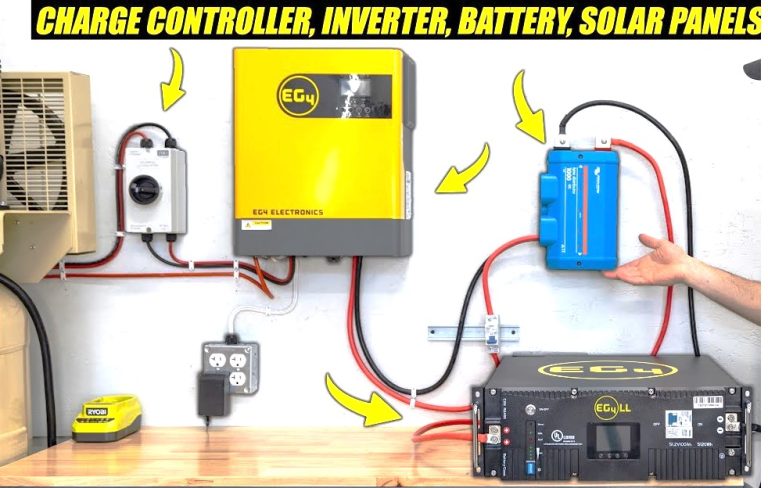RENEWABLE ENERGY
SOLAR PANEL

A solar cell is an electronic device that converts light energy directly into electrical energy through the photovoltaic effect. Typically made from semiconductor materials like silicon, it generates electricity when photons from sunlight dislodge electrons, creating an electric current.
Histry of Solar Cell
In 1839 French physicist Alexandre Edmond Becquerel created the world’s first photovoltaic cell. In 1873 Willoughby Smith discovers that selenium shows photoconductivity. 1883: Charles Fritts develops the under 1% efficiency first gold layer solid-state solar cell. In 1905, Albert Einstein won the Nobel Prize for publishing a paper which provides the theoretical foundation for solar energy. In 1954, Bell Labs invents the first high-power silicon solar cell (cost$300/watt). From 1950s-1975s, solar panels drop to just over $100 per watt. In 1999 to Today, the cost of photovoltaic modules falls dramatically, making solar power more accessible, affordable, the cost per watt having fallen to $0.50 per watt.
Future Chance of Solar cell
The “chance of solar cell” can refer to solar panel efficiency, market growth, or the technology’s future. Currently, typical domestic solar panels are 20–25% efficient, solar energy is projected to become a dominant power source by 2030. The thin-film solar cell market was valued at $14.31 billion in 2024 and is projected to reach $32.06 billion by 2034, with a compound annual growth rate (CAGR) of 8.40%. Asia-Pacific is the largest regional market for solar cells, with China and Japan being major players in both production and innovation. The typical lifespan of a solar panel is 25 to 30 years.
The Use for the Future
The history of continuous improvement fuels significant hope for solar energy’s future role in a sustainable world.
- Addressing Climate Change,
- Continued Efficiency Gains well over 37% efficiency.
- Versatile Applications: Future innovations, such as flexible, lightweight, and even transparent solar cells (e.g., solar windows or fabric solar cells), suggest a future where solar integration is seamless and ubiquitous, from building materials to portable devices and potentially even large-scale space-based solar power.
- Energy Independence: By providing a path to energy self-sufficiency for homeowners, businesses, and even remote communities, solar power strengthens energy security and reduces dependence on finite and politically volatile fossil fuels.
In essence, the history of solar cells is a testament to human ingenuity and a powerful indicator that, through sustained innovation and policy support, a future where sustainable, clean energy is the norm is within our reach.
Components of a Solar Cell

- Semiconductor material: The core of the cell, typically silicon.
- P-N Junction: The boundary where the p-type and n-type layers meet and driving a current.
- Anti-reflective coating: A thin layer allowing more light to be absorbed by the semiconductor.
- Metal Conductive Grid: Collects the freed electrons.
- Back Surface Field (BSF): Reflects stray electrons back into the main junction, increasing efficiency.
- Back Contact: A full metal layer completes the electrical circuit.
- Encapsulant and Back Sheet: Seal the cell from moisture and other environmental damage.
- Tempered Glass: protects the solar cells from weather and impact.
- Aluminum Frame: Protection for the glass and solar cells.
- Junction Box: Houses the electrical connections and bypass diodes.
- Bus Wire: Connects multiple solar cells & gathering the current.
Inverter

A solar inverter converts the direct current (DC) electricity from solar panels into alternating current (AC) electricity.
Types of solar inverters: String inverters, Microinverters, Hybrid inverters, AC-Coupled inverters and Power optimizers.
How the inverter works
- DC to AC conversion: Uses solid-state components like transistors to switch the current on and off rapidly, creating AC electricity.
- Maximum Power Point Tracking (MPPT): Use MPPT technology to continuously adjust the electrical load varing sunlight and temperature.
- Synchronization and safety: For grid-tied systems, the inverter synchronizes its AC output with the grid’s frequency and waveform.
Battery Storage
For a solar cell system is a rechargeable battery that stores excess electricity from solar panels for later use, such as at night or during cloudy days. These systems are often composed of lithium-ion batteries.
Daytime: The surplus energy is directed to the battery for storage.
Evening/Night: When solar panels are not generating enough power (e.g., at night or on cloudy days), the stored energy is used to power the home.
Exporting surplus: The energy is saved and used later, reducing the need to purchase from the grid.
Support the grid: In some cases, batteries can be networked to help stabilize the grid during high demand period
Quality of Solar Panel Installation
Proper design and sizing: Installers should perform an energy assessment and to ensure it can support the weight.
High-quality components:
- Solar panels: high efficiency and a strong warranty.
- Inverters: inverter is a reliable, reputable brand.
- Mounting systems: strong, corrosion-resistant, and withstand weather.
Expert and certified installation
- Professionalism: certified and experienced technicians to avoid issues like physical damage, micro-cracks, or water ingress.
- Adherence to standards: ensure safety, code, regulation and function.
- Proper angle and placement: angled optimally to maximize sun exposure, and installation on a stable surface.
- Electrical safety: proper wiring & connections, and protect overloads/lightning.
- Aesthetics: clean, organized appearance-concealed conduits/neatly aligned.
Solar Panel System Monitoring
Data collection: smart meters and sensors in the system (panels, inverters).
Data analysis: software analyzes energy production & efficiency.
Data presentation: presents in user-friendly formats-dashboards and reports,
Key features and benefits
- Real-time performance tracking,
- Energy consumption insights,
- Fault detection,
- System health and efficiency,
- Environmental impact tracking,
Types of Monitoring Systems
- System-level monitoring,
- Panel-level monitoring,
- Manual recording,
Capacity – Power Generation by Solar Panel
- A single residential solar panel typically generates between 250 and 400 watts per hour in direct sunlight, but a system’s total capacity depends on the number of panels and factors like location and weather.
- A typical household system can range from 1 to 4 kW, with a 4 kW system potentially producing around 2,850 kWh of electricity per year under ideal conditions, with 19 panels rated at 350 watts each would have a capacity of 6.65 kW (19×350=665019 cross 350 equals 665019×350=6650watts).
We Have Available Pumps
- Solar Irrigation Pump,
- Solar Drinking Water Pump,
Projects by Solar Panel

- Solar Street Light Solution,
- Market Light Solution,
- Solar Panel – Agro Projects Solution,
- Solar Panel – Cold Storage Solution,
- Solar Panel – Multi Storied Building
- On Grid
Calculation of Your Solar Panel Requirements:
- Energy Consumption: If your total annual usage is 10,950 kWh, your daily av. is 30 kWh.
- Peak Sun Hours: Your location may receive an average of 5 peak sun hours per day.
- Required System Size (in kW): Add a buffer (typically 20-25%) to account for system inefficiencies, shading, and panel degradation over time. Example: (30 kWh per day ÷ 5 peak sun hours) = 6 kW system. Adding a 20% buffer: 6 kW x 1.2 = 7.2 kW system size needed.
- Determine the Number of Solar Panels Needed: Choose a solar panel with a specific power output (wattage), commonly ranging from 350W to 450W for residential use. Example: For a 7,200 W (7.2 kW) system using 400 W panels: 7,200 W ÷ 400 W per panel = 18 panels.
Considerations
- Professional Consultation:These calculations provide a solid estimate, but consulting a qualified solar installer is highly recommended for a detailed assessment,
- Roof Space and Design,
- Budget and Goals



